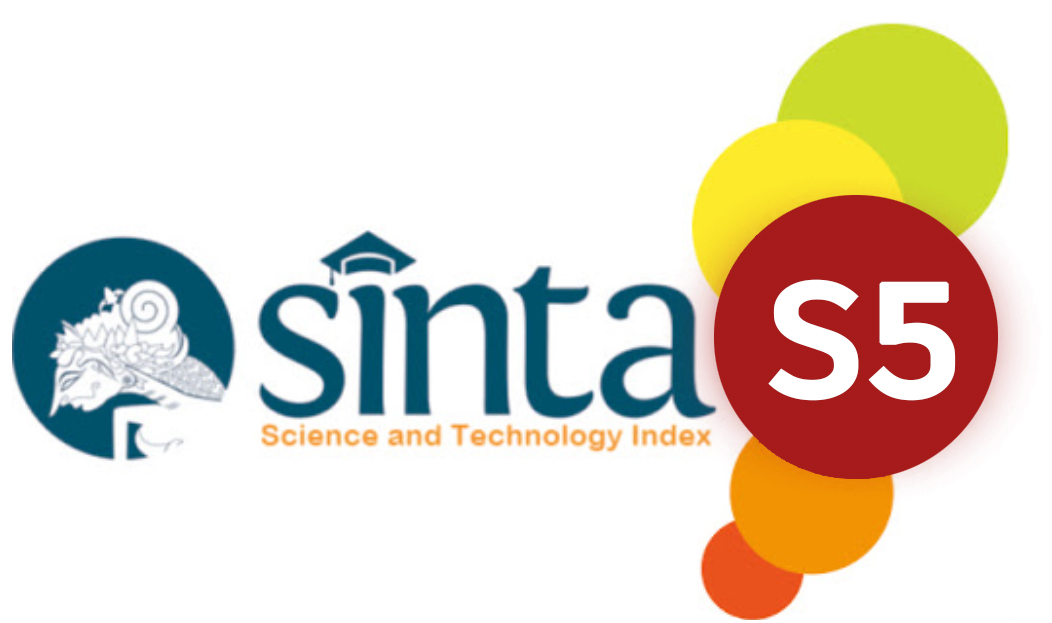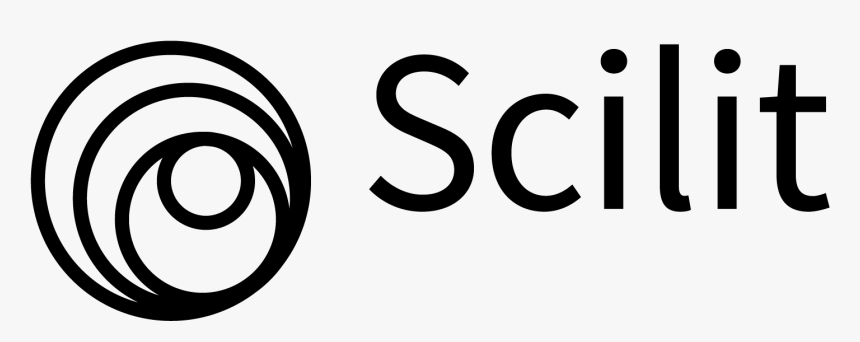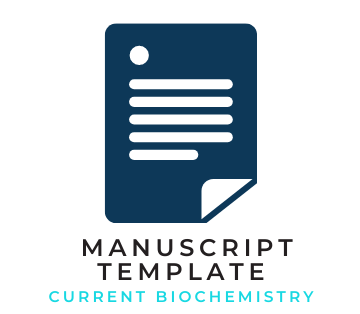The <i>In Vitro</i> Antibiofilm Activity of Water Leaf Extract of Papaya (<i>Carica papaya</i> L.) against <i>Pseudomonas aeruginosa</i>
Abstract
Pseudomonas aeruginosa is one of opportunistic pathogen forming bacterial biofilm. The biofilm sustains the bacterial survival and infections. This study aimed to assess the activity of water extract of papaya leaves on inhibition of cells attachment, growth and degradation of the biofilm using crystal violet (CV) biofilm assay. Research results showed that water extract of papaya leaves contains alkaloids, tanins, flavonoids, and steroids/terpenoids and showed antibacterial activity and antibiofilm against P. aeruginosa. Addition of extract can inhibit the cell attachment and was able to degrade the biofilm of 40.92% and 48.058% respectively at optimum conditions: extract concentration of 25% (v/v), temperature 37.5 °C and contact time 45 minutes. With a concentration of 25% (v/v), temperature of 50 °C and the contact time of 3 days, extract of papaya leaves can inhibit the growth of biofilms of 39.837% v/v.
References
Adinarayana K, Ellaiah P. 2002. Response surface optimization of the critical medium components for the production of alkaline protease by a newly isolated Bacillus sp. J Pharm SciTech. 5(3): 272-278.
Agnol RD, Ferraz A, Bernardi AP, Albring D, Nor C, Sarmento L, Lamb L. 2003. Antimicrobial Activity of Some Hypericum species. Brazil: TANAC SA.
Archer NK, Mazaitis MJ, Costerton JW, Leid JG, Powers ME, Shirtliff ME. 2011. Staphylococcus aureus biofilms properties, regulation and roles in human disease. Landes Bioscience. Virulence 2 (5): 445-459.
Ardani M, Pratiwi, SUT, Hertiani T. 2010. Efek campuran minyak atsiri daun cengkeh dan kulit batang kayu manis sebagai antiplak gigi, Majalah Farmasi Indonesia. 21(3): 191-200.
Canini A, Alesiani D, Giuseppe D, Tagliatesta P. 2007. Gas chromatography–mass spectrometry analysis of phenolic compounds from Carica papaya L. leaf. J Food Composit Analys. 20 (7): 584–590.
Cerca N, Martins S, Pier GB, Oliveira R, Azeredo J. 2005. The relationship between inhibition of bacterial adhesion to a solid surface by sub-MICs of antibiotics and subsequent development of a biofilm. Res Microbiol 156: 650–655.
Didik Wahyudi. 2010. Penghambatan Quorum Sensing pada Pseudomonas aeruginosa oleh Ekstrak Alpinia galanga l [Tesis]. Surakarta (ID). Universitas Sebelas Maret
Gunawan, IWA. 2009. Potensi buah pare (Momordica charantia l) sebagai antibakteri Salmonella typhimurium. Universitas Mahasaraswati Denpasar.
Harborne, JB. 1987. Metode Fitokimia: Penuntun Cara Modern Menganalisis Tumbuhan. Bandung: Institut Teknologi Bandung (diterjemahkan oleh Kosasih Padmawinata dan Iwang Soediro).
Harmely F, Wilda, Aldi Y. 2014. Formulasi gel ekstrak propolis dari sarang lebah trigona itama (cockrell) dan aktivitas antibakteri terhadap Staphylococcus epidermidis. Prosiding Seminar Nasional dan Workshop “Perkembangan Terkini Sains Farmasi dan Klinik IV”.
Jagani S, Chelikani R, Kim D. 2008. Effect of phenol and natural phenolic compounds on biofilm formation by Pseudomonas aeuginosa. Biofouling 25 (4): 321-324
Juliantina FR. 2008. Manfaat sirih merah (Piper crocatum) sebagai agen anti bakterial terhadap bakteri gram positif dan gram negatif. JKKI. 1(3): 5-8.
Karatan E, Watnick P. 2009. Signals, regulatory networks, and materials that build and break bacterial biofilms. Microbiol Molec Biol Rev. 73: 310-347
Krishna KL, Paridhavi M, Jagruti AP. 2008. Review on nutritional, medicinal and pharmacological properties of Papaya(Carica papaya Linn.). Nat Prod Rad. 7(4): 364-373.
Lee JH, Cho MH, Lee J. 2011. 3-Indolylacetonitrile decreases Escherichia coli O157:H7 biofilm formation and Pseudomonas aeruginosa virulence. Environ Microbiol.13(1): 62–73
Lee JH, Park JH, Cho HS, Joo SW, Cho MH, Lee J. 2013. Anti-biofilm activities of quercetin and tannic acid against Staphylococcus aureus. Biofouling. 29(5):491-499
Mansouri S, Safa A, Najar SG, Najar AG. 2013. Inhibitory activity of Iranian plant extracts on growth and biofilm formation by Pseudomonas aeruginosa. Malay J Microbiol. 9(2). 176-183
Milind P, Gurditta. 2011. Basketful Benefits of Papaya. IRJP, 2(7): 6-12.
Mulyadi M, Wuryanti, Purbowatiningrum RS. 2013. Konsentrasi hambat minimum (KHM) kadar sampel Alang-alang (Imperata cylindrical) dalam etanol melalui metode difusi cakram. Chem Info. 1(1): 35-42
Nitisapto M, Siradz SA. 2005. Evaluasi kesesuaian lahan untuk pengembangan jahe pada beberapa daerah di Jawa Tengah dan Jawa Timur. J Tanah Lingk, 5(2): 15-19.
Putri AA. 2014. Perbedaan sensitivitas kuman P.a penyebab infeksi nosokomial terhadap antibiotika generik dan antibiotika paten [skripsi] Padang (ID): Unand.
Rasyid R. 2011. Karakteristik kuman MDR-Pseudomonas aeruginosa penyebab infeksi nosokomial dengan menggunakan pulsed field gel electrophoresis (PFGE). Program Hibah Kompetisi Peningkatan Kualitas Pendidikan Dokter (PHK PKPD). Universitas Andalas.
Rosyidah K, Nurmuhaimina, Komari MD, Astuti. 2010. Aktivitas antibakteri fraksi saponin dari kulit batang tumbuhan Kasturi mangivera. Bioscientiae, 7 (2): 25-31.
Sandasi M, Leonard CM, Viljoen AM. 2009. The in vitro antibiofilm activity of selected culinary herbs and medicinal plants against Kisteris monocytogenes. Lett Appl Microbiol. 50: 30-35.
Saputra A. 2012. Aktivitas penisilin dari Penicillium chrysogenum pada substrat air lindi dengan variasi kadar molase dan waktu inkubasi [Skripsi]. Yogyakarta: Universitas Atma Jaya Yogyakarta
Saravanakumar K, Baskaran R, Kubendran TR. 2010. Acoustic and thermodynamic properties of binary liquid mixtures of acetophenone and benzene. J Appl Sci. 10: 1616-1621.
Sunanto EH. 2012. Efek ekstrak daun dewandaru (Eugenis uniflora) sebagai penghambat pembentukan biofilm pada Staphylococcus aureus secara in vitro [Skripsi]. Malang: Universitas Brawijaya.
Viju N, Satheesh S, Vincent, SGP. 2013. Antibiofilm activity of coconut (Cocos nucifera Linn.) husk fibre extract. Saudi J Biol Sci. 20: 85–91.
Yosephine AD, Wulanjati MP, Saifullah TN, Astuti P. 2013. Formulasi mouthwash minyak atsiri daun kemangi (Ocimum basilicum L.) serta uji antibakteri dan antibiofilm terhadap bakteri Streptococcus mutans secara in vitro. Trad. Med. J, 18(2): 95-102.
Yusha’u M, Onuorah FC, Murtala Y. 2009. In vitro sensitivity pattern of some urinary tract isolates to Carica papaya extracts. BaJoPAS. 2(2): 75–78.













